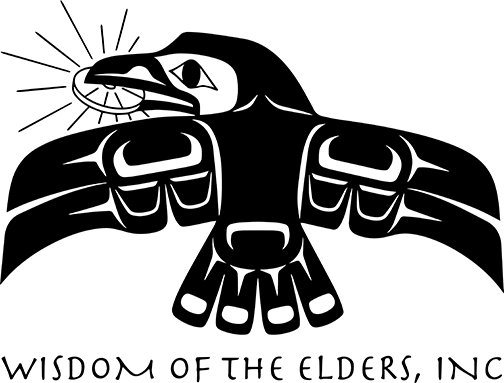The History and Evolution of
Christian Music on the Crow Reservation
with Milt Lee
Arlie Neskahi :
In the late 1800’s, the Pentecostal Church came to Crow Country. When the famous Crow medicine man, Goes Ahead adopted the Christian Church, it began a new chapter in the history of Native music.
Goes Ahead was a scout with Custer at the Battle of the Little Big Horn. Later, he turned his life to medicine. Perhaps it as his familiarity with the white man, or perhaps it was the prophecy of a savior coming to the Crow. We’ll never know, but it was through the Christian Church that some of the Crow people began a musical journey that today mixes religion with hip hop music.
Milt Lee visited the Crow Agency and brings back this story.
Milt Lee:
When I drove into Crow Agency, I was struck by the small town appearance. In a way, it reminded me of so many towns on the prairie. The business district was shrinking. The Interstate passed over, and people were a mixture of traditional Native and contemporary American – big pickup trucks, lots of dogs, and right in the center, next to the Crow Fair campgrounds, was Little Big Horn Community College. The college was very much like the rest of the town, a mixture of old buildings and a beautiful new classroom and administration building.
What I discovered as I began to talk to the folks was that in Crow country, there’s a fascinating combination of old and new reflected in the music too.
David Graber:
I’m Dave Graber and I work with, been working with the Crow Hymns Project since about, I guess, ’84 when I first came.
Lee:
Dave Graber is a middle aged white guy, with a Master’s degree from the University of Iowa and he just loves the musical offshoot called Crow Hymns.
Graber:
Now this is a tradition of Native American music that’s sometimes called Indigenous Christian Hymns. Really, the people here call them gospel songs, our Crow Gospel Songs. And it’s a tradition that’s pretty old, from the time that some renegade Christian groups broke off from their denomination and formed their own indigenous Christianity.
Music:
Crow Hymn
But that’s when they started singing like this, and instead of singing in the European way, they sang in the Indian way.
It’s just like, you know, a Native American way of thinking, way of hearing music, the way of experiencing life. You just go back to the old way of thinking. And the missionaries tried. You know, some of them practically pulled out their hair because here were these Indian people who were supposed to be Christian, going back to the old way of singing songs. Well, that’s not a problem for the Indian people, but it’s a problem for the European people sometimes. MUSIC 2nd Crow.
Lee:
Now if this process of becoming Christian just stopped with the Crow hymns, it would be fascinating enough, but it didn’t. Evangelical missionaries came to Crow country, and in the 1920’s and 30’s, some of the Crows went out to Los Angeles to hear the gospel, the gospel according to Aimee Semple McPherson, and the Four Square Gospel Church.
Sound:
Archival recoding of Aimee Semple McPherson preaching
Along with the modern age of Christian broadcasting came the infusion of contemporary instrumentation and tunes. And, of course, the Crow went right along with the change.
Music:
Roy Stewart Song
Roy Stewart is a Christian guitar player, and works at Little Big Horn Community College in the Media Department. He plays with various bands around the reservation and just started producing his own gospel music.
Roy Stewart:
I became a Christian in 1979 and attended the late Harold Carpenter’s church.
And what you see here on the Crow Indian Reservation is there’s the majority of the musicians are more or less contemporary gospel. There’s probably one blues band. Jared Stewart, my cousin, and the rest, there’s the Crow hymns. Of course we’ve got that. But the majority of the style of music is contemporary. And then we have Hip Hop, actually.
Music:
Hip Hop cut
Lee:
Hip Hop? I’m stunned! But there you are. They say the Lord works in mysterious ways. Roy introduced me to a friend of his – who is young, hip and very Crow. He looks like a rock and roller, but his talk is contemporary Christian.
John William Latin:
My name is um, John William Latin, Jr., and I’m a member of the Crow tribe. And I’m a Whistling Water. And I’m a Hip Hop gospel musician. I didn’t choose to be this, you know. The calling kind of chose me, you know.
Music:
Hip Hop cut
Latin:
You know, there’s a music for everybody to reach, to reach everybody. Like talking about the contemporary like the older folks or whatever, but the hip hop was mainly just to reach the kids, you know. That’s what the Lord wanted us to do.
Lee:
John, when you started doing this stuff, you took what these guys are doing, what they call contemporary gospel, and you just moved it into the Hip Hop world, same thing.
Latin:
The beats, everything is, it’s all authentic you know, authentic from the lion’s den.
Lee:
What’s the name of your group?
Latin:
The name of the group is Resurrection. (laughs)
Music:
Hip Hop cut
Lee:
There’s a creative energy on the reservation that I haven’t seen before. A blending of old and new, taking the new and making it old, taking the old and shaking it’s bones.
For Wisdom of the Elders, I’m Milt Lee in Crow Agency, Montana.
Neskahi:
Contemporary Rhythms is written and produced by Milt Lee of the Cheyenne River Sioux Tribe and his wife, Jamie Lee, who live and work in Rapid City, South Dakota. Check out their website, realrez dot com for more of their work.



